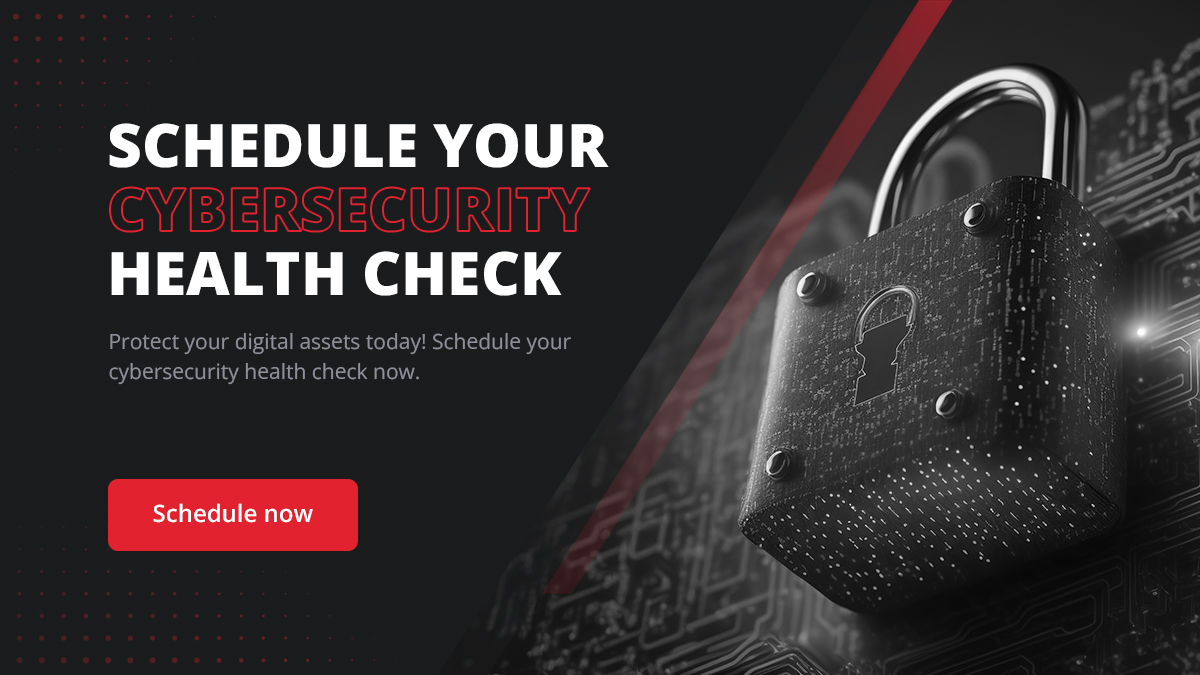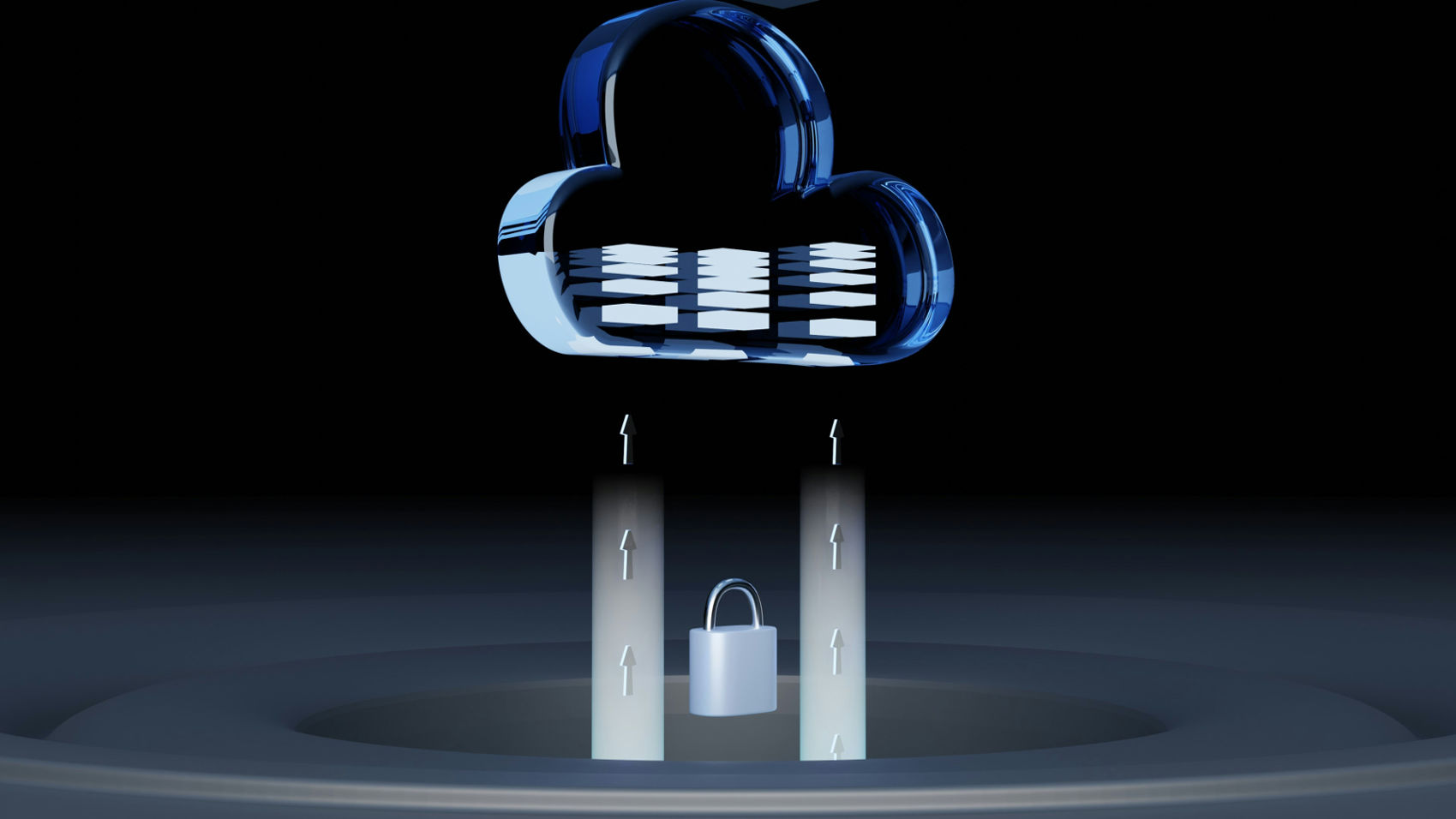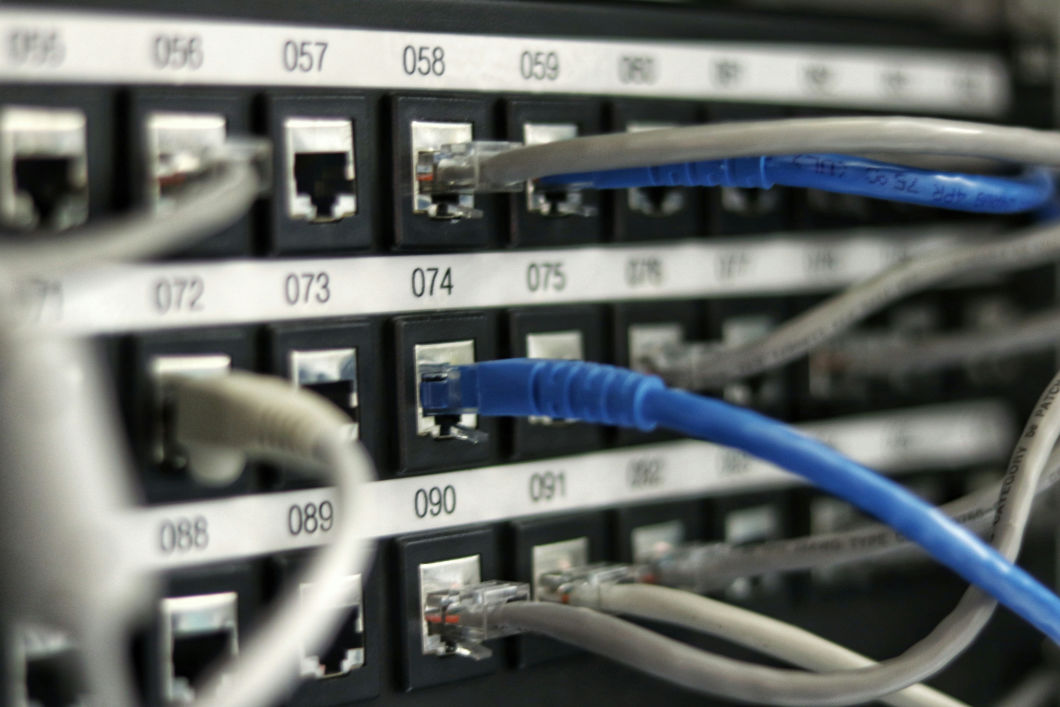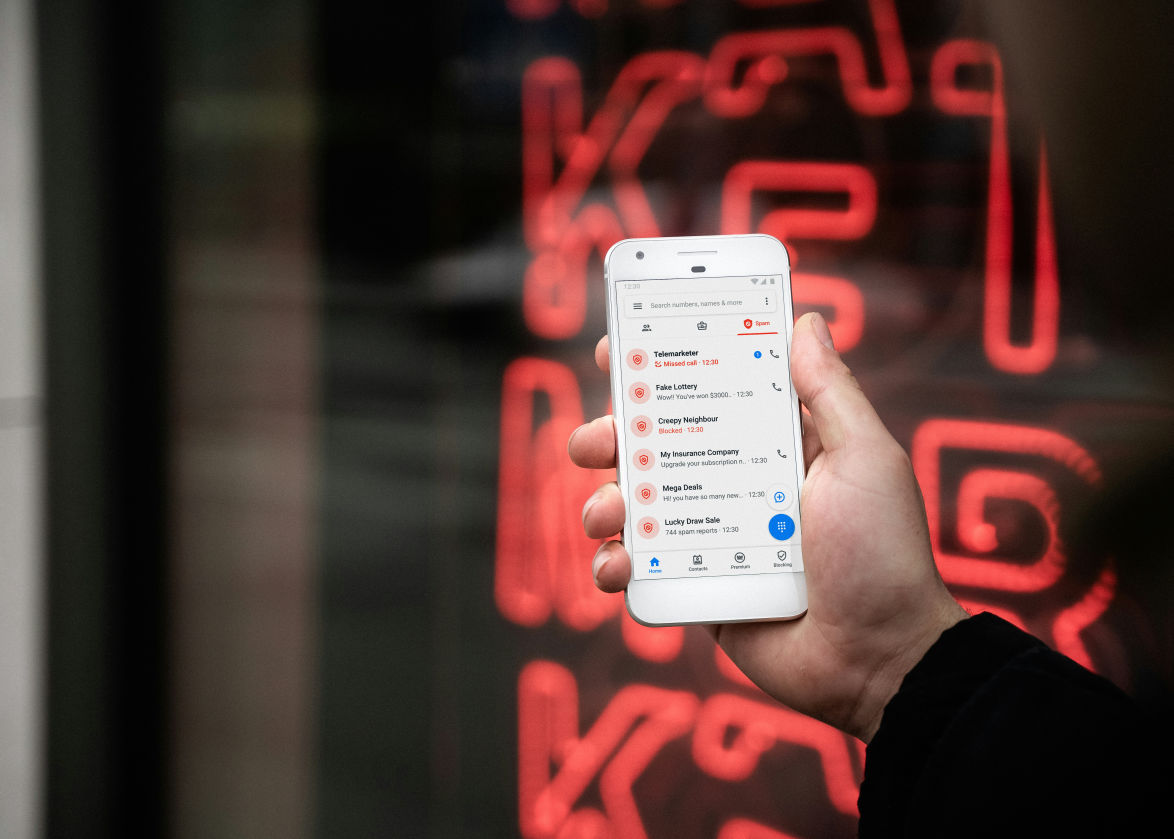Prevent Credential Harvesting to Protect Your Precious Data

How Credential Harvesting Works
Introduction
In the digital age, the security of personal information has become paramount. Among the various methods cybercriminals use to infringe on individual privacy and security, credential harvesting is a particularly insidious technique. This method threatens personal security and compromises the integrity of organizations, making understanding and combating it crucial for users and administrators alike.
Credential Harvesting Definition
Credential harvesting refers to the process by which attackers collect usernames, passwords, and other authentication details from unsuspecting users. This method is often employed through deceptive practices such as phishing emails, spoofed websites, or malware. Credential harvesting is stealthy, unlike other forms of cyber attacks that seek to disrupt systems or demand ransom. Attackers use harvested credentials to gain unauthorized access to systems, perpetrate fraud, or sell information on the dark web, thus posing a sustained threat to user security. This tactic leverages technological vulnerabilities and human psychology, making it a complex issue to address.
The Basics of Credential Harvesting
Credential harvesting is a multifaceted threat that targets the very core of personal and organizational security—authentication credentials. At its most basic, this method involves the collection of user IDs, passwords, and other sensitive authentication data that provide access to restricted areas, systems, or information. Cybercriminals use various techniques to capture this data, including deceptive links, fake login pages, and social engineering tactics. The ultimate goal is to use these credentials to breach systems, steal data, and even impersonate the victim for further malicious activities.

How Credential Harvesting Works in Cyber Attacks
The process of credential harvesting in cyber attacks can be sophisticated, employing a series of steps designed to be undetectable to users and security systems. Here’s a step-by-step breakdown:
- Targeting and Research: Attackers often start by identifying potential targets with access to valuable information. This might involve social engineering techniques such as phishing emails or pretexting, where the attacker gains trust by pretending to need information for a legitimate reason.
- Deployment of Tools: The next step involves deploying tools designed to capture credentials. This could be through phishing websites that mimic legitimate pages, keyloggers that record keystrokes, or malware that captures data and sends it back to the attacker.
- Collection of Credentials: As users interact with malicious tools or websites, their credentials are harvested without their knowledge. This information is either used directly by the attacker or sold on the dark web to other criminals.
- Exploitation: Once the credentials are obtained, they can be used to access sensitive systems, perform unauthorized transactions, or steal personal or corporate data. The exploitation can be immediate or occur over an extended period to avoid detection.
- Lateral Movement: In more complex attacks, especially those targeting organizations, harvested credentials allow attackers to move laterally within the network, accessing increasingly sensitive levels of information and systems.
Is Credential Harvesting an Attack Type?
Credential harvesting can indeed be classified as a type of cyber attack, specifically targeting the unauthorized collection of user credentials. This method is part of a broader category of security threats known as information stealing or identity theft attacks. It is crucial to understand that while credential harvesting itself is a method of acquiring access credentials, it often serves as the initial step in a multi-stage attack process. This process might include further malicious activities such as account takeover, financial fraud, or advanced persistent threats (APTs) within a targeted organization.
Characteristics of Credential Harvesting Attacks
Credential harvesting attacks share several defining characteristics:
- Stealth and Deception: These attacks are typically covert, relying heavily on deception to trick users into divulging their credentials. This could be through phishing emails, malicious attachments, or spoofed websites that look indistinguishably close to their legitimate counterparts.
- Use of Technology and Social Engineering: Attackers use a combination of technical tools (like keyloggers or malware) and social engineering tactics to obtain credentials. The reliance on social engineering is significant because it exploits human error, often considered the weakest link in cybersecurity.
- Goal-Oriented: Credential harvesting aims to obtain credentials that can be used to breach systems or networks. This contrasts with other attack types that may aim to install ransomware or cause system downtime directly.
- Subsequent Unauthorized Access: The harvested credentials are typically used to perform unauthorized actions, including stealing more data, transferring funds, or further penetrating a network to deploy additional malware.
Impact and Implications
Credential harvesting can have severe and far-reaching impacts. For individuals, it can lead to identity theft, loss of personal data, and financial damage. For organizations, the consequences might include significant financial losses, damage to reputation, and legal ramifications due to breaches of compliance and data protection laws.
Common Techniques Used for Credential Harvesting
Credential harvesting employs various techniques to capture users' authentication details. These methods are both technologically advanced and deceptively simple, leveraging both software vulnerabilities and human error. Below are some of the most common techniques that attackers use to harvest credentials:
Phishing Attacks
Phishing remains the most prevalent and effective method for credential harvesting. In a phishing attack, the attacker sends fraudulent emails or messages that appear to be from a trusted source, such as a bank, a popular social media platform, or a company executive. These messages contain malicious links or attachments that lead to fake login pages designed to capture the user's credentials. The sophistication of these emails can vary, but they often include urgent or enticing language to trick the recipient into acting quickly, bypassing normal security precautions.

Malware and Keyloggers
Malware, particularly keyloggers, is another common tool for credential theft. Once installed on a victim's device, keylogging malware records every keystroke made by the user, including when they enter usernames and passwords. These logs are then sent back to the attacker. Malware can be installed through malicious downloads, email attachments, or compromised websites, making it a versatile tool for cybercriminals.
Fake Wi-Fi Networks
Attackers sometimes set up fake Wi-Fi networks, often in public spaces, that mimic legitimate hotspots. Unsuspecting users connect to these networks, and the attacker can monitor and intercept their internet traffic. When users log into websites or enter personal information while connected to these networks, their credentials can be captured without their knowledge.
Man-in-the-Middle Attacks
In man-in-the-middle (MITM) attacks, the attacker intercepts communications between two parties without their knowledge. This can occur on unsecured networks, such as public Wi-Fi, or through malware that has infected a user's device. By positioning themselves in the data flow, attackers can capture login credentials as they are transmitted between the user and the website or service they are accessing.
Social Engineering
Social engineering involves manipulating people into divulging confidential information. Unlike other techniques that rely on technological manipulation, social engineering exploits psychological weaknesses such as trust, fear, or the desire to be helpful. This could be in the form of pretexting, where the attacker creates a fabricated scenario to gain the victim’s trust and obtain their credentials directly, or baiting, where the promise of a good or service is used to entice the victim into providing their login details.
Spoofing Attacks
Spoofing attacks involve an attacker disguising themselves as another user or device to steal credentials or other sensitive information. This method can take various forms, including email spoofing, where attackers forge sender addresses to trick victims into believing they are communicating with a trusted entity. IP spoofing is another variant, where attackers disguise their internet protocol address to intercept or redirect communications and gain unauthorized access to network systems.
Session Hijacking
Session hijacking is an attack where the perpetrator takes over a user’s session after they have authenticated with a server. An attacker can impersonate the user and carry out unauthorized activities by stealing or guessing the session token (like a session cookie). This technique exploits the session control mechanism that maintains the state of user interactions with web applications. Attackers might use packet sniffing on unsecured networks to capture session cookies or employ cross-site scripting (XSS) to inject malicious code into web pages visited by users.
Credential Stuffing
Credential stuffing is an automated attack that uses previously breached username and password pairs to gain unauthorized access to user accounts. Attackers use large-scale automated tools to try these credentials on various websites in the hope that individuals have reused their passwords across multiple services. This technique is particularly effective due to the common practice of password reuse and can lead to multiple account compromises from a single set of credentials.
DNS Spoofing
DNS spoofing, or cache poisoning, involves corrupting the domain name system (DNS) to redirect users to malicious websites without their knowledge. By altering DNS responses, an attacker can replace the IP address of a legitimate site with that of a fraudulent site, effectively capturing any credentials entered by the unsuspecting user. This technique can have widespread consequences, affecting multiple users who attempt to access the spoofed site.
SIM Swapping
SIM swapping is a technique where an attacker convinces a mobile provider to switch the victim’s phone number to a SIM card owned by the attacker. Once the swap is complete, the attacker can receive the victim’s SMS and voice communications, including those used for two-factor authentication (2FA). This allows them to bypass security measures that use SMS-based verification and gain access to the victim's accounts and sensitive information.

Importance of Understanding the Impact of Credential Harvesting
Understanding the impact of credential harvesting is crucial for both individuals and organizations, as it directly affects privacy, financial stability, and security integrity. Credential harvesting can lead to a wide range of detrimental outcomes, from identity theft and unauthorized purchases to complete system takeovers and data breaches. For individuals, the theft of credentials can result in personal data exposure, loss of control over social media and email accounts, and significant financial loss. The repercussions can extend far beyond the immediate financial impact, affecting credit scores and personal reputation, and can require considerable time and resources to resolve.
For organizations, the implications of credential harvesting are even more severe. A successful attack can compromise sensitive internal data, expose customer information, and result in substantial financial losses due to fraud, regulatory fines, and damage to public trust. Furthermore, businesses may face operational disruptions and significant expenses associated with forensic investigations, system remediations, and legal costs. The damage to an organization’s reputation following a breach can also have long-lasting effects on customer trust and business viability.
Credential Harvesting Attack Process
Credential harvesting is a systematic and methodical approach used by cybercriminals to gain unauthorized access to private data. The attack process typically unfolds in several stages, each carefully planned and executed to maximize the likelihood of success while minimizing detection. Here's how attackers orchestrate these steps:
Target Identification
The first step in the credential harvesting attack process is target identification. Attackers select their targets based on various criteria, such as their potential value, vulnerability, and accessibility. Targets can be individuals with access to valuable personal and financial information or organizations that handle sensitive data. Attackers often conduct preliminary research to gather as much information as possible about their targets, including their technology infrastructure, employee details, and typical online behaviors. This information helps in crafting more convincing and effective attack strategies.
Attack Vector Selection
Once targets are identified, attackers choose the most appropriate attack vector. This involves selecting the method that is most likely to succeed based on the target’s vulnerabilities and the attacker's resources and capabilities. Common vectors include phishing emails, malware-infected links or attachments, compromised websites, or even direct network breaches. The selection is strategically made to exploit specific weaknesses, such as a lack of employee cybersecurity training, outdated software systems, or poorly secured network endpoints.
Delivery Mechanism Implementation
After selecting the attack vector, attackers implement the delivery mechanism. This is the stage where the actual tools and methods chosen are put into action to execute the attack. For instance, if phishing is the chosen vector, this phase involves crafting phishing emails, creating fake websites, and distributing the emails to the targeted individuals or groups. If malware is the method of choice, this step would involve embedding the malware in appealing downloads or initiating drive-by downloads that automatically install the malware when a compromised site is visited. The delivery mechanisms are designed to be stealthy and efficient, often leveraging automated scripts and bots to maximize reach and impact.
Execution of the Attack
The execution phase is where the attack actively unfolds. Here, the tools and strategies previously set up are deployed to capture the credentials of the targeted users. This could involve the activation of malicious scripts on a compromised website, the opening of a phishing email by the victim, or the exploitation of a network vulnerability. During this phase, the attacker's primary goal is to induce the target to unwittingly reveal their credentials, often by logging into a spoofed website or by manipulating software vulnerabilities to capture keystrokes or authentication tokens.
Data Collection
Once the attack is executed, the next step is data collection. In this phase, the attacker gathers and stores the credentials entered by unsuspecting users or intercepted through malicious software. Sophisticated attackers often use automated systems to organize the collected data efficiently, categorizing it by type (e.g., passwords, payment information, access tokens) and even by the perceived value of the accounts associated with the credentials.
Data Exfiltration
Data exfiltration is the process by which collected data is transferred from the victim's network to a location controlled by the attacker. This transfer must be executed stealthily to avoid detection by network security systems. Techniques such as encryption are used to hide data movement. The successful exfiltration of data allows attackers to steal sensitive information and potentially sell this data on the dark web or use it for further attacks.
Attack Concealment
The final step in the credential harvesting attack process is concealing the attack to avoid detection and prolonging unauthorized access. Attackers cover their tracks by deleting logs, using rootkits to hide malware, or employing other techniques that erase indicators of compromise. This phase is critical for maintaining access for future exploitation and avoiding legal repercussions. By concealing their presence, attackers can continue to harvest more data over time or leave backdoors open for future attacks.
The Impact of Credential Harvesting
Credential harvesting is a significant security threat with far-reaching consequences. By stealthily obtaining login credentials, attackers can gain unauthorized access to personal, financial, and business accounts, leading to many negative outcomes. Understanding how this leads to compromised accounts and the subsequent consequences for both individuals and organizations is crucial for enhancing cybersecurity measures.
How Credential Harvesting Leads to Compromised Accounts
The primary impact of credential harvesting is the compromise of user accounts. Once attackers have obtained credentials, they can log in to accounts as if they were the legitimate owners. This access can be used to steal personal information, transfer funds, or access confidential business data. These credentials are often tested on different platforms due to common password reuse practices, potentially leading to multiple account breaches from a single set of stolen credentials. Furthermore, attackers can modify account security settings, change passwords, and lock out legitimate users, making recovery challenging and time-consuming.
Consequences for Individuals
For individuals, the consequences of credential harvesting can be devastating. Financial theft is one of the most immediate impacts, where unauthorized access leads to the direct loss of funds or unauthorized purchases. Additionally, identity theft can occur when attackers use stolen credentials to impersonate the victim, potentially opening fraudulent accounts in their name or committing crimes that could be attributed to the victim. The recovery from such identity theft can be a lengthy and distressing process, involving legal proceedings, credit score rehabilitation, and personal security overhauls.
Consequences for Businesses and Organizations
For businesses and organizations, the ramifications of credential harvesting can be even more severe and far-reaching. A single compromised account can provide a gateway to access an entire network, leading to data breaches that expose sensitive customer information, intellectual property, and internal communications. The financial implications can include direct losses, regulatory fines, legal fees, and compensations. Moreover, businesses often suffer reputational damage, leading to lost business, diminished customer trust, and a competitive disadvantage. Additionally, organizations may face operational disruptions and have to invest significant resources in remediation activities to address security vulnerabilities and restore normal operations.
Compromised Accounts
The immediate and most obvious impact of credential harvesting is compromised accounts. When attackers gain unauthorized access to user credentials, they can easily log into various accounts across platforms, especially if the user has reused passwords. This access allows cybercriminals to perform a wide range of malicious activities, such as transferring funds, making unauthorized purchases, sending out further phishing emails from trusted accounts to spread malware, or accessing confidential information. The compromise could extend to administrative or financial control systems for businesses, leading to severe operational and financial ramifications. These breaches can go undetected for long periods, especially if the attackers aim to maintain access for ongoing exploitation.

Dark Web and Credential Harvesting
Once credentials are harvested, they often find their way to the dark web, a part of the internet hidden from conventional search engines and accessible only with special software. Here, stolen credentials are bought and sold in bulk. The availability of these credentials on the dark web facilitates various criminal activities, from identity theft to the creation of fraudulent accounts and financial fraud. The presence of such a marketplace makes credential harvesting not just a singular attack but a part of a larger ecosystem of cybercrime, perpetuating the cycle of theft and fraud.
Identity Theft and Credential Harvesting
Credential harvesting is intricately linked to identity theft. By obtaining the authentication details of individuals, attackers can assume their victims' identities. This can involve applying for credit, claiming government benefits, or conducting illegal activities under another person's name. The consequences for the victims can be catastrophic, affecting their financial health, credit scores, and legal standing. Recovery from identity theft can be a long, arduous process, involving legal battles to clear one’s name, restore financial health, and secure compromised personal and professional accounts.
Two-Factor Authentication
Two-factor authentication (2FA) is a critical security measure that adds an additional layer of protection beyond just the username and password. By requiring a second form of verification, 2FA significantly reduces the risk of unauthorized access even if the credentials are compromised. This second factor could be something the user knows (like a PIN), something the user possesses (like a smartphone app or a hardware token), or something inherent to the user (like a fingerprint or other biometric data).
Strategies to Combat Credential Harvesting on the Dark Web
Implementing two-factor authentication is a key strategy in combating the effectiveness of credential harvesting, especially when it comes to mitigating the risks posed by the trading of stolen credentials on the dark web. Here are several strategies that utilize or enhance 2FA to protect against these threats:
- Use of Biometric Verification: Incorporating biometrics as a second factor ensures that even if credentials are stolen and sold on the dark web, the attacker still cannot access the account without the biometric component, which is nearly impossible to replicate or steal in a usable form.
- Time-based One-Time Passwords (TOTP): Applications that generate time-sensitive codes provide a dynamic second factor that changes every 30 to 60 seconds. This method is much more secure than static passwords or even SMS-based codes, which can be intercepted or redirected via SIM swapping.
- Hardware Security Keys: These devices provide a physical element to the authentication process and are considered one of the most secure forms of 2FA. Security keys can be used in conjunction with user names and passwords to authenticate users on multiple services and devices. Because they require physical possession, they greatly reduce the risk of remote attacks originating from credential sales on the dark web.
- Push Notification Approval: Some 2FA systems send a push notification to a trusted device when an attempt is made to log in. The user must approve the login attempt on their device, adding an extra layer of security by ensuring that only those with physical access to the linked device can approve access.
- Behavioral Biometrics: This involves analyzing patterns in user behavior such as typing speed, mouse movements, and even walking patterns when using mobile devices. Such behavioral data can be difficult to mimic and can trigger alerts or additional security checks if unusual patterns are detected.
How to Identify Credential Harvesting Attacks?
Proactively identifying credential harvesting attacks is crucial to prevent unauthorized access and mitigate potential damage. Awareness and vigilance are key in recognizing the early signs of these attacks. Here are practical strategies to help users and organizations detect and respond to suspicious activities that may indicate credential harvesting attempts.
Check for Suspicious Emails and Communication
Credential harvesting often begins with phishing or spoofing emails that attempt to trick users into providing their login information. Identifying these suspicious emails is a critical first step in thwarting credential theft:
- Inspect Sender Information: Look closely at the email address of the sender. Phishing attempts often come from addresses that mimic legitimate ones with small, easy-to-miss variations.
- Analyze the Content: Be wary of emails with generic greetings, urgent requests for information, and grammatical errors. These are red flags commonly associated with phishing emails.
- Verify Links Before Clicking: Hover over any links in the email (without clicking) to see the URL. If the address looks suspicious or does not match the supposed sender's website, it's likely a phishing attempt.
- Look for Unsolicited Requests: Legitimate organizations will not ask for sensitive information via email. Any email requesting credentials or personal information should be considered suspicious.
- Use Email Security Tools: Employ tools that filter out spam and phishing attempts. Many email services include security features that can help detect and quarantine suspicious emails.
Monitor for Unusual Account Activities or Login Attempts
Another critical defense against credential harvesting is monitoring accounts for any unusual activities or unauthorized login attempts:
- Set Up Alerts: Many services offer alert settings to notify you of unusual activity, such as logins from new devices or locations.
- Review Login History: Regularly check your accounts' login histories, which can often be accessed through security settings. Unfamiliar logins can indicate compromised credentials.
- Implement Account Lockout Policies: After a certain number of failed login attempts, accounts should be temporarily locked. This can prevent unauthorized access from attackers who might be trying credentials obtained through harvesting.
- Use Security Software: Install and maintain reputable security software that can detect and alert you to suspicious activity on your devices.
- Regularly Update Passwords: Change passwords regularly and use strong, unique passwords for different accounts to reduce the risk of successful credential harvesting.
Look for Unexplained Changes in System or Account Settings
One of the indicators of a potential credential harvesting attack is unexplained changes in system or account settings. These changes might include:
- Modification of Email or Account Settings: Unauthorized changes to account recovery options, forwarding settings, or privacy settings can be a sign that an attacker has gained access to the account.
- New Devices or Applications: Unexpected devices connected to your account or new applications installed that you did not authorize can indicate that someone else is using your credentials.
- Changes in Security Notifications: If you stop receiving usual notifications or start receiving unexpected ones, this might suggest that someone has altered your notification settings to hide unauthorized activities.
Monitoring these changes closely and setting up alerts for any modifications can help catch credential harvesting early.
Be Aware of Unexpected Requests for Personal Information
Another red flag for credential harvesting attacks is receiving unexpected requests for personal information. This can occur through various means:
- Phone Calls: Be skeptical of unsolicited phone calls asking for personal details or authentication information, even if they appear to come from a legitimate company or service provider.
- Emails and Messages: Any email or message that asks for sensitive information directly should be treated with suspicion, particularly if it pressures you to act quickly or threatens negative consequences.
- Surveys and Forms: Watch out for links to surveys or forms that ask for personal or financial information, especially if these are sent unexpectedly or from unverifiable sources.
Educating employees and users about these tactics is crucial in preventing information from being given to malicious actors.
Notice the Presence of Unfamiliar Software or System Vulnerabilities
Credential harvesters often use malware or other software tools to steal credentials directly from users’ devices. Noticing these can be pivotal:
- Unfamiliar Programs or Icons: Check for new programs or icons you did not install on your device. Malware can sometimes be disguised as legitimate software.
- Slow System Performance: A sudden slowdown in system performance can indicate malicious activity in the background.
- Antivirus Warnings: Pay attention to alerts from your antivirus software about unauthorized attempts to access your system or software trying to modify system settings.
How to Prevent and Mitigate a Credential Harvesting Attack?
Credential harvesting is a pervasive threat in today's digital world, but effective measures can be taken to prevent and mitigate these attacks. Addressing this challenge requires a comprehensive approach that includes robust password policies, the use of multi-factor authentication, and extensive user education.
Implement Strong, Unique Passwords and Change Them Regularly
One fundamental way to combat credential harvesting is by implementing strong, unique passwords for each account. Passwords should be long and complex and include a mix of uppercase and lowercase letters, numbers, and symbols. Avoid using easily guessable passwords such as "123456" or "password," which are common and easily cracked. Regularly changing passwords also helps limit the damage in case a password is somehow compromised. A good practice is to change passwords every three to six months and whenever a data breach is suspected.
Use Multi-Factor Authentication Wherever Possible
Multi-factor authentication (MFA) significantly increases account security by requiring additional verification beyond just a password to gain access. This could be a code sent to a phone, a fingerprint, or facial recognition. MFA acts as an extra layer of defense, making it much more difficult for attackers to gain unauthorized access even if they have obtained a user's password. Encouraging or enforcing MFA across all sensitive and personal accounts greatly reduces the risk of credential harvesting attacks succeeding.
Educate Users on Recognizing Phishing and Suspicious Communications
User education is perhaps one of the most critical defenses against credential harvesting. Users should be trained to identify the signs of phishing and other suspicious communications that may be used to steal credentials. This includes recognizing unsolicited emails that request personal information, inspecting email addresses and URLs for authenticity, and being wary of emails that convey a sense of urgency or fear. Regular training sessions, along with simulated phishing campaigns, can be effective in keeping users vigilant about security and prepared to respond appropriately to potential threats.
Keep Software and Systems Updated with the Latest Security Patches
An essential defense against credential harvesting is keeping all software and systems updated with the latest security patches. Cyber attackers often exploit vulnerabilities in outdated software to gain unauthorized access or to inject malware that assists in credential theft. Regular updates ensure that these vulnerabilities are addressed as soon as patches are available, closing off avenues that could be exploited by attackers. It is important for both individuals and organizations to establish a routine for checking and applying software updates and patches, including operating systems, applications, and all endpoints.
Regularly Monitor and Audit Network and Account Activities
Continuous security monitoring and regular auditing of network and account activities help detect unusual actions that could indicate an early credential harvesting attempt. This includes monitoring excessive login failures, unusual access locations or times, and patterns that deviate from normal user behaviors. Implementing automated tools that flag these anomalies can facilitate timely responses before any significant damage occurs. Additionally, regular audits can identify and rectify security gaps in an organization’s network that might be exploited by cybercriminals. These practices not only help detect ongoing attacks but also play a crucial role in preventing future incidents by ensuring that all security measures function correctly.
Laws and Regulations Addressing Credential Harvesting
Credential harvesting poses significant legal risks besides the obvious security threats, prompting various governments and regulatory bodies to implement laws and regulations specifically designed to combat this issue. These laws aim to protect personal data and establish clear legal consequences for breaches involving credential theft. Notable among these regulations are the General Data Protection Regulation (GDPR), the California Consumer Privacy Act (CCPA), and the Computer Fraud and Abuse Act (CFAA).
General Data Protection Regulation (GDPR)
The GDPR is a pivotal regulation enforced by the European Union to protect the privacy and personal data of EU citizens. It sets stringent guidelines on how data should be handled and gives individuals greater control over their personal information. Under GDPR, organizations must implement appropriate security measures to protect personal data from unauthorized access, including safeguarding against credential harvesting. In the event of a data breach, such as one involving stolen credentials, organizations must notify the relevant authorities and affected individuals within 72 hours of becoming aware of the breach. Failing to comply with GDPR can result in substantial fines, potentially up to 4% of the annual global turnover or €20 million, whichever is higher.
California Consumer Privacy Act (CCPA)
The CCPA is a state-wide privacy law that affects any major business that collects data from California residents. Similar to GDPR, the CCPA aims to enhance privacy rights and consumer protection. It mandates that businesses disclose the types of personal information they collect and the purpose of collection. It also grants consumers the right to see all information a company has saved on them, as well as a full list of all the third parties that data is shared with. In terms of credential harvesting, the CCPA ensures that businesses take reasonable security measures to protect Californians' personal data from theft and unauthorized access. Non-compliance with CCPA can lead to penalties and give consumers the right to sue for damages in case of a breach, thus increasing the liability for companies that fail to prevent credential theft.
Computer Fraud and Abuse Act (CFAA)
The CFAA is a federal statute in the United States that provides a legal framework for prosecuting individuals who engage in computer-related crimes, including unauthorized access or exceeding authorized access to computers and networks. Credential harvesting directly falls under the activities criminalized by this act, as it typically involves accessing someone’s personal accounts without permission. The CFAA allows for both criminal charges and civil actions against violators, making it a powerful tool for addressing the challenges posed by credential theft. This act not only deters such behavior through the threat of severe penalties but also enables victims to seek compensation for damages incurred due to such cybercrimes.
How RedZone Technologies Help You Against Credential Harvesting and Securing Your Data
In the battle against credential harvesting and the broader challenge of securing sensitive data, RedZone Technologies as a Cyber Security MSP is a pivotal ally for businesses aiming to fortify their cyber defenses. With a comprehensive suite of data protection solutions, strategic partnerships, and featured technologies, RedZone’s proactive VSO Program offers an integrated approach to partnering and protecting you.
Data Protection Solutions
RedZone Technologies provides robust data protection solutions to safeguard critical information from unauthorized access and cyber threats like credential harvesting. These solutions encompass a variety of tools and services:
- Encryption Technologies: RedZone implements advanced encryption solutions to protect data at rest and in transit, ensuring that sensitive information remains inaccessible even if intercepted.
- Network Security: RedZone shields corporate networks from unauthorized access and potential breaches by using firewalls, intrusion detection systems, and secure VPN services.
- Data Loss Prevention (DLP): DLP technologies are employed to detect and prevent data breaches by monitoring, detecting, and blocking sensitive data while in use, in motion, and at rest.
- Regular Security Audits and Assessments: RedZone conducts thorough cyber security control assessments to identify key risks and gaps, remediation, and enhancements to improve your overall security posture. It also conducts cybersecurity audits and risk assessments to identify vulnerabilities and recommend enhancements to improve overall security posture.
Key Partnerships
Understanding that cybersecurity is a field that requires constant evolution and collaboration, RedZone Technologies has established key partnerships with industry leaders in security and data protection. These partnerships enable RedZone to offer cutting-edge solutions and remain at the forefront of technology advancements:
- Technology Vendors: Collaborations with leading cybersecurity technology providers ensure that RedZone has access to the latest security tools and intelligence, enhancing its ability to defend against emerging threats.
- Industry Alliances: By participating in cybersecurity alliances, RedZone stays updated on the latest strategies and best practices in cyber defense, which are then integrated into our client solutions.
Featured Solutions
RedZone Technologies offers different Products and prides itself on offering tailored and specialized solutions that address the specific needs of its clients. Some of the featured solutions include:
- Threat Detection and Response: Utilizing state-of-the-art technologies, RedZone offers real-time threat detection and response capabilities, allowing businesses to identify and mitigate attacks before they cause harm quickly.
- Identity and Access Management (IAM): By implementing comprehensive IAM solutions, RedZone ensures that only authorized users can access critical systems, significantly reducing the risk of credential harvesting.
- Custom Security Frameworks: RedZone also develops custom security frameworks that are aligned with the organization’s specific operational needs and compliance requirements.

Conclusion
Understanding and combating credential harvesting is essential for safeguarding personal and organizational data in the digital age. This malicious practice not only compromises individual security but also poses significant risks to the integrity and operations of businesses. Effective strategies to prevent and mitigate credential harvesting attacks include implementing strong password policies, utilizing multi-factor authentication, maintaining up-to-date software, and educating users about the signs of phishing and other suspicious activities.
The laws and regulations like GDPR, PCI, HIPAA, NIST, CCPA, and CFAA are instrumental in defining the legal framework and responsibilities regarding data protection and cybersecurity. These laws encourage better security practices and provide a basis for legal action against violations, enhancing overall cyber resilience. Our extensive Resources library offers valuable insights and guidance on maintaining a resilient cybersecurity posture. Contact Us today for more information on securing your organization's future with proactive cybersecurity measures.
RedZone Technologies plays a crucial role in this landscape by offering advanced data protection solutions, fostering key partnerships, and providing innovative security technologies tailored to businesses' needs. Their comprehensive approach helps ensure that companies are well-equipped to defend against credential harvesting and other cyber threats, thus protecting their valuable data and maintaining trust with their customers and partners.
FAQs
Addressing common questions related to credential harvesting can provide clearer insights into the nature of these cyber threats and the steps individuals and organizations can take to protect themselves. Here are some frequently asked questions:
What if Someone Clicks on a Phishing Link but Does Not Enter Details?
Clicking on a phishing link but not entering any details is still risky, as merely visiting a malicious site can expose the user to other types of threats, such as drive-by downloads where malware is automatically downloaded and installed without the user's knowledge. It is crucial to immediately perform a full system scan using updated antivirus software to check for any malware that might have been installed. Users should also clear their browser caches and consider changing passwords for sensitive accounts as a precautionary measure.
How Do Ethical Considerations Play a Role in Combating Credential Harvesting?
Ethical considerations are central to combating credential harvesting, particularly in how data is collected, used, and protected. Organizations must prioritize ethical practices by ensuring transparency in their data collection methods and strictly adhering to privacy laws and regulations. Ethically combating credential harvesting also involves respecting user consent and providing adequate security measures to protect user data from unauthorized access. Additionally, ethical hacking, such as penetration testing, plays a role by helping organizations identify vulnerabilities in their systems that could be exploited by credential harvesters.
Can Legal Actions Be Taken Against Credential Harvesters?
Yes, legal actions can be taken against credential harvesters under various laws that criminalize unauthorized access to computer systems and data theft. Laws like the Computer Fraud and Abuse Act (CFAA) in the United States, as well as similar regulations in other countries, provide frameworks for prosecuting individuals who engage in credential harvesting. Victims can report incidents to law enforcement agencies that specialize in cybercrimes, and businesses can pursue civil action to seek damages and enforce cybersecurity measures against perpetrators.
What Role Does Social Engineering Play in Credential Harvesting?
Social engineering plays a significant role in credential harvesting by exploiting human psychology rather than hardware and software vulnerabilities. Techniques such as phishing, pretexting, and baiting involve manipulating individuals into providing confidential information, such as usernames and passwords. These tactics often rely on creating a sense of trust or urgency, tricking users into making security mistakes. Educating users about the signs of social engineering and encouraging skeptical and vigilant behavior are critical components of a comprehensive cybersecurity strategy to counter these tactics.
 Security Updates
Security UpdatesUnderstanding IT Compliance: Scope, Benefits, and Challenges
Discover what IT compliance is, its importance, benefits, risks of non-compliance, frameworks, and how to achieve robust IT compliance in your organization.
 Security Updates
Security UpdatesImplement Secure Browsing with Powerful SSL Decryption
Explore the essentials of SSL decryption, its importance, challenges, and best practices for enhancing security and compliance for business in a detailed guide
 Security Updates
Security UpdatesTransitioning from Proxy Firewalls to Endpoint Security
Explore the evolution from proxy firewalls to endpoint security, enhanced threat detection, data encryption, and comprehensive protection for modern networks.
 Security Updates
Security UpdatesExpert IT Risk Assessment: Protect Your Business Today!
Mitigate potential IT threats with our comprehensive risk assessment guide, ensuring your digital infrastructure. Ensure your business is secure an...
 Security Updates
Security UpdatesEssential Guide to Best Practices in Compliance Security
Explore essential strategies for compliance security in this comprehensive guide. Learn about safeguarding your business and meeting regulatory sta...
 Security Updates
Security UpdatesSecure Your Data with Expert Cloud Database Solutions
Learn efficient solutions and secure your cloud databases with encryption and compliance features, ensuring data safety and privacy across all plat...
 Security Updates
Security UpdatesA Guide to Cloud Network Technology: Benefits and Types
Unlock the potential of cloud network technology for seamless connectivity. Learn and scale solutions that drive business innovation and growth via...
 Security Updates
Security UpdatesAffordable Managed IT Services for Small Businesses
Explore top-managed IT services for small businesses to boost efficiency and security. Get expert insights and practical tips to optimize your IT o...
 Security Updates
Security UpdatesSecure Your Network with Gateway Security Solutions
Explore the essentials of gateway security: learn about its importance for network protection and best practices to safeguard your digital assets e...
 Security Updates
Security UpdatesDisaster Recovery Testing: Ensure Business Continuity
Explore effective disaster recovery testing strategies in this guide to maintain business continuity, prevent data loss, and minimize downtime duri...
 Security Updates
Security UpdatesMaximizing Security: Vulnerability Management Lifecycle
Explore the complete guide to the Vulnerability Management Lifecycle to boost your cyber resilience and secure your business IT infrastructure effe...
 Security Updates
Security UpdatesYour Network with Endpoint Security Management
Explore our comprehensive guide on Endpoint Security Management to understand its importance, how it works, and best practices for robust network s...
 Security Updates
Security UpdatesEnsuring Security Compliance: Tips, Insights & Strategies
Discover the essentials of security compliance, its importance, frameworks, and tools. Learn how to protect data and meet regulatory standards effe...
 Security Updates
Security UpdatesBoost Your Security with Internal Penetration Testing
Dive into internal penetration testing with our in-depth guide. Learn the essentials, techniques, and best practices to fortify your cybersecurity ...
 Security Updates
Security UpdatesEgress vs Ingress: A Guide to Data Traffic Management
Understand Egress vs Ingress in data management. Learn and explore their roles, traffic analysis, risks, and best practices for network and cloud s...
 Security Updates
Security UpdatesPrevent Credential Harvesting to Protect Your Precious Data
Understand credential harvesting. Learn how it works, common techniques, its impact, and strategies to prevent and mitigate attacks to secure your ...
 Security Updates
Security UpdatesSecure Your Big Data: Top Solutions for Data Security
Protect your valuable data with our robust big data security solutions. Learn about the threats and Safeguard against cyber threats and ensure comp...
 Security Updates
Security UpdatesSecure Your Network with Advanced Management Solutions
Explore the details of comprehensive network security management: Learn key strategies, best practices, and tools to safeguard your digital environ...
 Security Updates
Security UpdatesGuide to On-Path Attacks: Protecting Your Cybersecurity
Learn about on-path attacks in this comprehensive guide, exploring definitions, types, consequences, and key prevention strategies to safeguard you...
 Security Updates
Security UpdatesExploring Managed Cloud Services: A Comprehensive Guide
Dive into the Managed Cloud Services with our in-depth guide. Explore benefits, types, and best practices to enhance your business's cloud strategy...
 Security Updates
Security UpdatesComprehensive Guide to Ubiquitous Computing: Impact & Future
Explore the details of ubiquitous computing, from its core concepts and layers to its societal impact, key technologies, applications, and future p...
 Security Updates
Security UpdatesClone Phishing Explained: Detection and Prevention Guide
Discover how clone phishing works and its impact. Learn effective strategies to identify, prevent, and respond to these sophisticated email threats...
 Security Updates
Security UpdatesHow to Secure Your Business with Cyber Security Insurance
Explore the essentials of Cyber Security Insurance, covering its importance, types of coverage, benefits, and considerations for businesses in the ...
 Security Updates
Security UpdatesEfficient Data Spooling Solutions For Streamlined Operation
Learn How To Efficiently Manage And Store Your Data With Our Reliable Data Spooling Services. Keep Your Information Organized And Accessible With T...
 Security Updates
Security UpdatesMaximizing Compliance & Risk Management: Expert Strategies
Learn how to ensure business success with effective compliance and risk management strategies. Explore definitions, differences, frameworks, and ch...
 Security Updates
Security UpdatesUnderstanding MDF vs IDF: Key Differences & Benefits
Explore the crucial differences and examples between MDF and IDF in networking, understanding their roles, functions, and impact on network infrast...
 Security Updates
Security UpdatesRedZone Wins CRN's Top Security 100 & MSP 500 Awards 2024
RedZone Technologies earns CRN's Security 100 & MSP 500 Awards, affirming its leadership and innovative approach in the cybersecurity and IT manage...
 Security Updates
Security UpdatesJames Crifasi Speaks on Cybersecurity at Tech Conference
Join James Crifasi, CTO & COO of RedZone Technologies, at the Tech Conference as he explores cybersecurity's role in driving business growth and ad...
 Security Updates
Security UpdatesRedZone's James Crifasi Wins SonicWall's Technical Hero Award
CTO James Crifasi of RedZone Technologies earns SonicWall's Technical Hero of the Year, exemplifying unparalleled dedication to cybersecurity and I...
 Security Updates
Security UpdatesHow to Encrypt Email in Outlook
Learn how to encrypt email in Outlook with our step-by-step guide. Secure your messages using S/MIME, Office 365 Encryption OME, and add-ins for pr...
 Security Updates
Security UpdatesWhat Is Security Monitoring? Importance and Tools
Explore the importance of security monitoring, its key roles, types, and how it protects organizations against threats, ensuring compliance and pro...
 Security Updates
Security UpdatesServer 2012 R2 End of Life: Implications and Next Steps
Learn about Server 2012 R2 end of life: Understand its impact, key dates, risks post-EOL, and explore upgrade options and migration strategies for ...
 Security Updates
Security UpdatesProtect Personal Data: Smishing and Phishing Prevention
Know how to identify and protect against smishing and phishing attacks. Learn the techniques, types, and preventive measures for personal and busin...
 Security Updates
Security UpdatesSmurf Attack Guide: Prevention & Detection Strategies
Explore prevention & recovery from Smurf Attacks: Understand DDoS defense, detection signs, and secure network practices in our detailed cybersecur...
 Security Updates
Security UpdatesWhat is a Bad USB Attack, and How Do You Prevent It?
Learn about Bad USB attacks, their various forms, and strategies for safeguarding devices. Learn how to mitigate risks with effective prevention te...
 Security Updates
Security UpdatesKey Differences Between DOS Attack vs DDOS Attack
Explore the key differences between DDoS vs DoS attacks, their types, impacts, and prevention strategies in our comprehensive guide to enhance cybe...
 Security Updates
Security UpdatesUnderstanding the Impact of a Ping of Death Attack
Explore the ins and outs of Ping of Death attacks. Understand how they work, their impact on networks, and strategies to prevent them to keep your ...
 Security Updates
Security UpdatesThe Power of the Human Firewall: Your First Line of Defense
Discover the critical role of the human firewall in cybersecurity, combining employee vigilance with technology to protect against cyber threats ef...
 Security Updates
Security UpdatesStateful Firewall vs. Stateless Firewalls: What's the Difference?
Learn the key differences between stateful and stateless firewalls and how they protect your network. Discover the right choice for your security n...
 Security Updates
Security UpdatesUnderstanding the 4 Levels of PCI Compliance
Explore PCI DSS Compliance with RedZone: Key steps to protect card data and ensure secure transactions. Learn about compliance levels and tips for ...
 Security Updates
Security UpdatesWhat Is a Security Breach and How to Prevent Them
Learn how to effectively guard your business against security breaches with RedZone Technologies. Discover simple steps to keep your data safe and ...
 Security Updates
Security UpdatesUnderstanding Tailgating in Cybersecurity
Understand tailgating attacks in cybersecurity: what they are, how they work, and effective strategies for prevention to keep your business...
 Security Updates
Security UpdatesWhat is a Managed Service Provider and Its Benefits
Explore the role of Managed Service Providers (MSPs) in enhancing IT efficiency and cybersecurity for businesses, covering benefits, servi...
 Security Updates
Security UpdatesBreach Prevention: 5 Best Practices to Protect Your Data
Learn about data breaches: what they are, their impact, and how to prevent them. Explore best practices for securing your business against cyber th...






